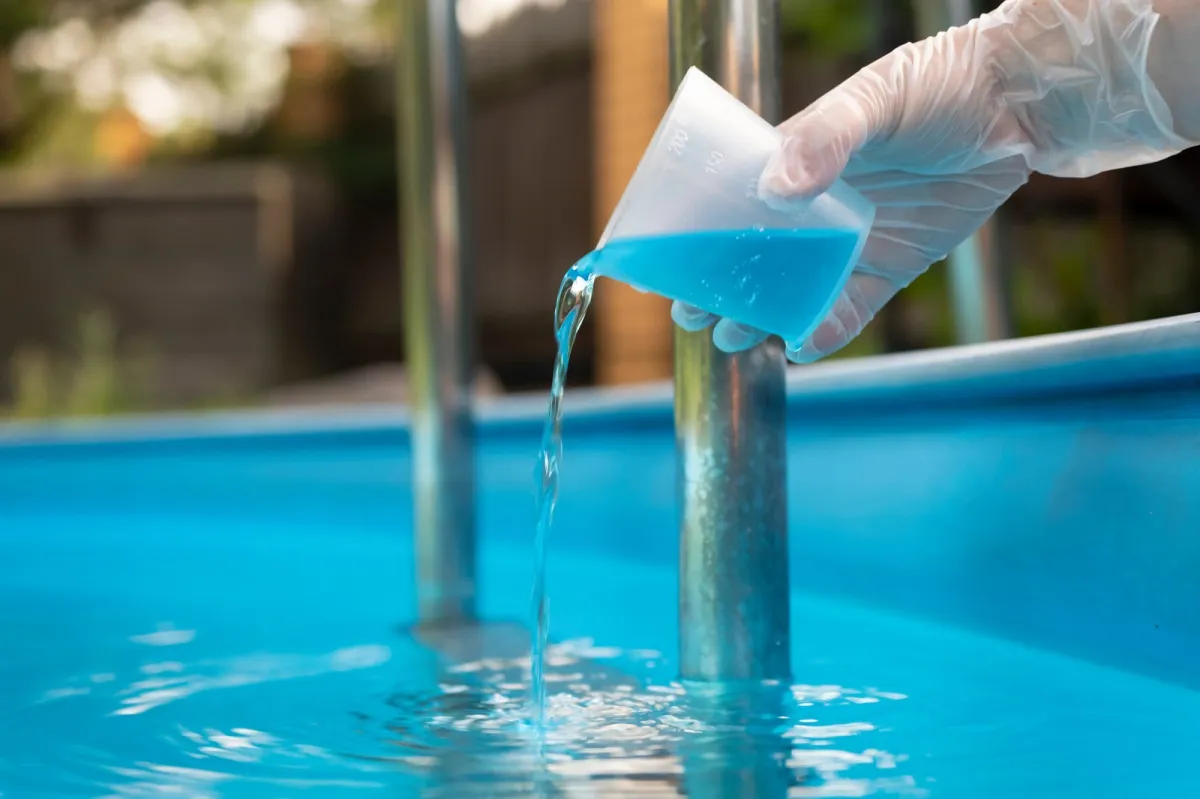Finding the Best Swimming Pool Algaecide: Your Complete Guide to Crystal Clear Water

Have you ever walked out to your pool only to find it looking more like a green swamp than a refreshing oasis?
You're not alone in this frustrating battle. Algae can turn your beautiful pool into an embarrassing mess in just a few days. We know how disappointing it feels to see your investment ruined by these unwelcome green invaders.
This guide will show you exactly how to choose the best swimming pool algaecide for your specific situation. You'll learn which products work best for different types of algae and how to prevent future outbreaks from ruining your swimming season.
Why Your Pool Needs the Right Algaecide Protection
Think of algae like weeds in your garden. They're always trying to take over, and once they get started, they spread incredibly fast.
Algae are natural organisms, but in your pool they create the perfect breeding ground for dangerous bacteria like E. coli. Without proper algaecide protection, you're fighting a losing battle against nature itself.
Understanding Different Types of Pool Algae
Before choosing the best algaecide for pools, you need to know what you're fighting against.
Green Algae: The Most Common Enemy
Green algae is what most people think of when they picture pool problems. It spreads fast and turns your water cloudy green.
The good news? It's usually the easiest to treat with the right algaecide.
Mustard Algae: The Stubborn Yellow Menace
Mustard algae looks yellowish-brown and clings to pool walls. This type resists regular chlorine treatment, making it essential to use the best pool algaecide for green algae that specifically targets this stubborn variety.
Black Algae: The Most Dangerous Type
Black algae appears as dark spots and grows deep into pool surfaces. This type requires aggressive treatment with specialized algaecides designed for tough infestations
How to Choose the Best Swimming Pool Algaecide
Selecting the right product depends on several key factors that determine effectiveness.
Consider Your Algae Type
For Green Algae:
Quaternary ammonium-based algaecides work well
Copper-based products provide long-lasting protection
Polyquat algaecides offer non-foaming options
For Mustard and Black Algae:
Copper-based algaecides show superior results
High-concentration formulas tackle tough cases
Evaluate Pool Size and Usage
Small Residential Pools (under 20,000 gallons):
Standard concentration algaecides work fine
Weekly maintenance doses prevent problems
Large Pools (over 20,000 gallons):
Commercial-grade algaecides offer better value
Concentrated formulas reduce chemical handling
Step-by-Step Guide to Using Pool Algaecide
Follow these steps to get maximum effectiveness from your algaecide treatment.
Step 1: Test Your Water Chemistry
Check These Levels First:
pH should be between 7.2-7.6
Chlorine levels at 1-3 ppm
Total alkalinity between 80-120 ppm
Proper water balance ensures your algaecide works effectively.
Step 2: Calculate Proper Dosage
Standard Dosing Guidelines:
Prevention: 2-4 ounces per 10,000 gallons weekly
Treatment: 6-16 ounces per 10,000 gallons
Severe infestations: Follow manufacturer's shock dose
Step 3: Apply Algaecide Correctly
Best Application Practices:
Pour slowly around pool edges
Never dump in one spot
Apply in evening to avoid sun degradation
Safety Precautions:
Wear protective equipment
Keep people and pets away during application
Best Pool Algae Killer Ingredients to Look For
Different active ingredients target algae in various ways. Here's what works best.
Quaternary Ammonium Compounds
Benefits:
Effective against most algae types
Won't stain pool surfaces
Compatible with all sanitizer systems
Copper-Based Formulations
Benefits:
Extremely effective against stubborn algae
Long-lasting residual protection
Considerations:
May cause staining in some pools
Not recommended for saltwater systems
Polyquat Algaecides
Benefits:
Extremely effective against stubborn algae
Long-lasting residual protection
Considerations:
May cause staining in some pools
Not recommended for saltwater systems
Polyquat Algaecides
Benefits:
Non-foaming formula
Won't affect water balance
Safe for all pool types
Common Algaecide Mistakes That Waste Money
Avoid these costly errors that reduce effectiveness and waste your investment.
Using Too Little Product
Many pool owners underdose their algaecide to save money. This creates resistant algae strains that become harder to kill later.
Solution: Always follow manufacturer's dosing instructions exactly.
Applying During Peak Sun Hours
UV rays break down algaecide chemicals before they can work effectively.
Solution: Apply algaecide in the evening or early morning when sun exposure is minimal.
Ignoring Water Balance
Improper water balance will contribute to algae growth problems.
Solution: Test and balance water before adding any algaecide.
Prevention Tips That Save Time and Money
The best pool algaecide is the one you use before problems start.
Weekly Maintenance Schedule
Monday: Test Water Chemistry
Check pH, chlorine, and alkalinity
Adjust levels as needed
Wednesday: Add Algaecide
Apply weekly maintenance dose
Brush pool walls and floor
Friday: Shock Treatment
Add chlorine shock as needed
Run filter overnight
Environmental Factors to Watch
High-Risk Conditions:
Heavy rainfall that dilutes chemicals
Hot weather that promotes algae growth
High bather loads that consume sanitizer
Protective Actions:
Increase algaecide frequency during risk periods
Test water more often in summer months
Signs You Need Stronger Treatment
Watch for these warning signs that indicate your current program isn't working.
Visual Indicators:
Water clarity decreasing despite normal chemical levels
Colored spots appearing on walls or floor
Slippery surfaces that feel slimy to touch
When you notice these signs, it's time to upgrade to a more aggressive treatment program.
Cost-Effective Algaecide Strategies
Get maximum protection without overspending on pool chemicals.
Buy Concentrated Products
Concentrated algaecides cost more upfront but provide better value per treatment. A single bottle often lasts an entire season.
Use Preventive Programs
Regular maintenance doses cost much less than treating major algae outbreaks. Prevention also saves money on extra chlorine and cleaning supplies.
Time Your Purchases
Buy algaecide during off-season sales when prices are lowest. Stock up for the entire swimming season when deals are available.
Conclusion
Keeping your pool algae-free doesn't have to be a constant struggle. The right algaecide program protects your investment and ensures safe, enjoyable swimming all season long.
Remember to identify your algae type, choose compatible products, and follow proper application procedures. Most importantly, start prevention programs before problems develop.
With the right knowledge and the best swimming pool algaecide for your specific needs, you'll enjoy crystal clear water that makes your pool the envy of the neighborhood.

© 2025 | All Rights Reserved | Privacy Policy
